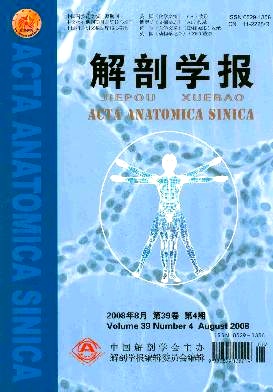|
|
Electron microscopic observations on changes of cytoplasmic organelles in the oocytes of Cervus nippon hortulorun
2010, 41 (1):
119-123.
doi: 10.3969/j.issn.0529-1356.2010.01.023
Objective Revealing the developmental regulation of Cervus nippon’s oocyte and organelles. Methods In the experiment,follicle systems during both estrum and non- estrum were divided into the primordial follicle,growing follicle and mature follicle according to the Cervus nippon’s follicle diameter size,formation of zonapellucida,appearance time of follicular cavity.At the same time,observations on cytoplasmic organelles in development of oocytes were conducted with electron microscopic,eyepiece micrometer and photomicrographic technique(The number of every oocyte observed is 6-8). Results In the primordial follicle and early growing follicle phase,the quantity of mitochondria,golgi apparatus,smooth endoplasmic reticulum and cortical granules increased gradually and all organelles moved to the cortical area.However,in the late growing follicle and mature follicle phase,Golgi apparatus and rough endoplasmic reticulum disappeared,cortical granules began to arrange themselves in line beneath the plasma membrane of the oocyte,mitochondrias dispersed toward the central region of cytoplasm,and almost all the round mitochondria with rare cristae turned into hooded ones, and nucleus compaction occurred.In addition,the short and thick microvilli began to appear from the primary follicle ovocyte,become intensive and slender when secondary follicle’s ovocyte;It’s until tertiary follicle’s ovocyte,microvilli started to shorten and become coarse,and even parts of them contract from the zona pellucida gradually.Conclusion In the development of oocytes, the changes of type,quantity and distribution on mitochondria has a close relation with cells at proliferation,differentiation and metabolism level.Cortical granule has no association with golgi apparatus basically,but smooth endoplasmic reticulum(SER).The nuclei are the sites of RNA synthesis and warehouses,and its d
Related Articles |
Metrics
|


